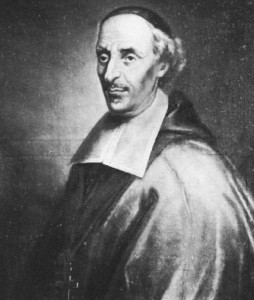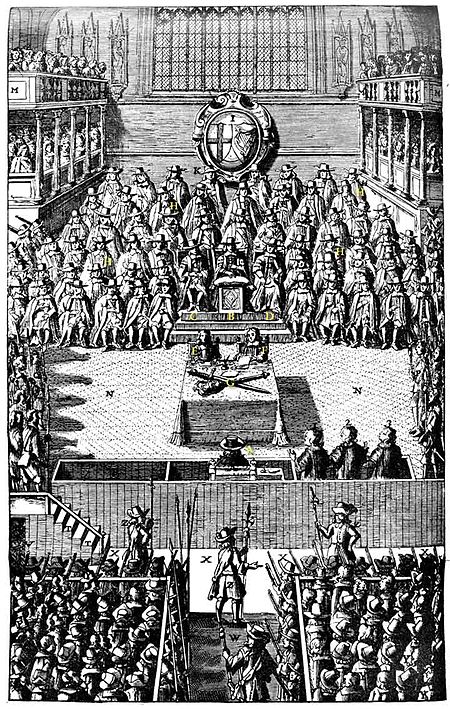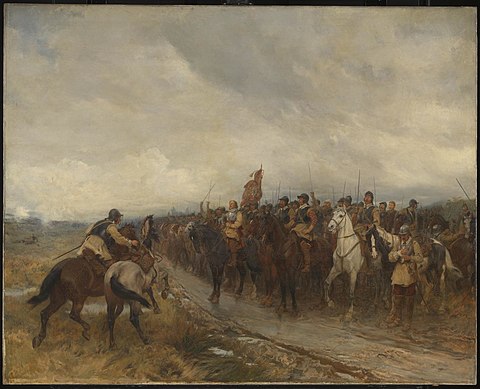Champlain and Quebec
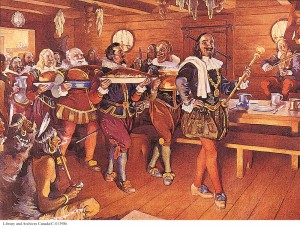
This painting by C.W. Jefferys shows Champlain leading a procession to the table at Port Royal Source -http://etext1.navajo.pearsoncanada.ca/ebook/launcheText.do?values=launchedfrombookshelf::Y::bookID::29233::languageid::1::sessionID::12607156191220439740192016::scenario::1::launchState::goToEBook::invokeType::lms::scenarioid::scenario1::smsUserID::75037014::fromloginpage::Y::platform::::uid::20151027120429::ubd::20151027120429::ubsd::20151027120429::hsid::e3285595987c5434fd9e6deb03cde955 (page 20)
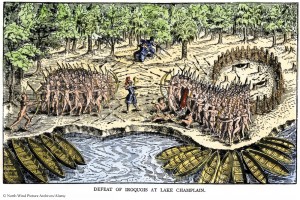
Engraving based on a drawing by Champlain of his 1609 voyage. It depicts a battle between Iroquois and Algonquian tribes near Lake Champlain opening the settlement of New France 1600s Source – http://etext1.navajo.pearsoncanada.ca/ebook/launcheText.do?values=launchedfrombookshelf::Y::bookID::29233::languageid::1::sessionID::12607156191220439740192016::scenario::1::launchState::goToEBook::invokeType::lms::scenarioid::scenario1::smsUserID::75037014::fromloginpage::Y::platform::::uid::20151027120429::ubd::20151027120429::ubsd::20151027120429::hsid::e3285595987c5434fd9e6deb03cde955 (page 22)
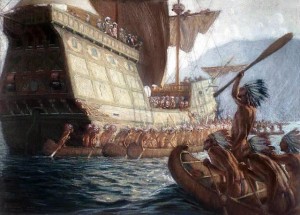
Painting by George Agnew Reid, done for the third centennial (1908), showing the arrival of Samuel de Champlain on the site of Quebec City.
Source -https://en.wikipedia.org/wiki/Samuel_de_Champlain
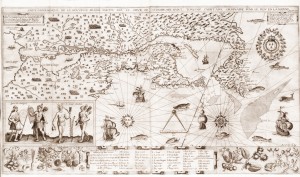
Map of New France (Champlain, 1612). A more precise map was drawn by Champlain in 1632. Source – https://en.wikipedia.org/wiki/Samuel_de_Champlain#Exploration_of_New_France
Jesuits and Huron
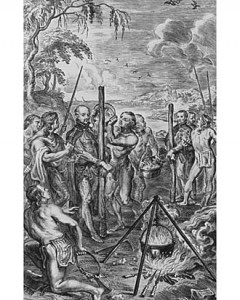
Jean de Brébeuf and Gabriel Lallemant stand ready for boiling water/fire “Baptism” and flaying by the Iroquois in 1649. Source – https://en.wikipedia.org/wiki/Jesuit_Missions_in_North_America
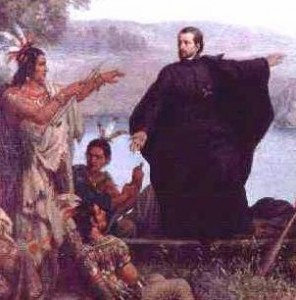
Father Jacques Marquette with Indians. Source – https://en.wikipedia.org/wiki/Jesuit_Missions_in_North_America
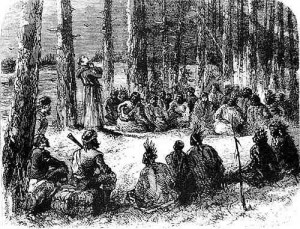
Jesuit missionary teaching the natives. Source – https://colonizationofamerica.wikispaces.com/French+Colonies
Royal Government

The Governor represented the king in the colony; responsible for the defence of New France and for relations with the English and the Indians. Source – http://history.lbpsb.qc.ca/m2u2l2.htm
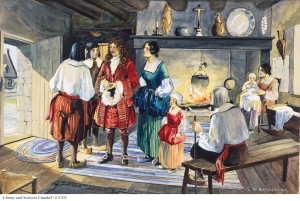
The Intendant of New France controlled settlement and economic development Source – http://etext1.navajo.pearsoncanada.ca/ebook/launcheText.do?values=launchedfrombookshelf::Y::bookID::29233::languageid::1::sessionID::24343108951247459830222016::scenario::1::launchState::goToEBook::invokeType::lms::scenarioid::scenario1::smsUserID::75037014::fromloginpage::Y::platform::::uid::20151027120429::ubd::20151027120429::ubsd::20151027120429::hsid::e5a130d5870172cafe106a4802c2ebdc (Page 35)
Coureur de bois
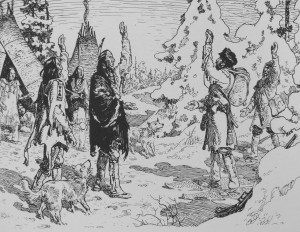
Arrival of Pierre-Esprit Radisson in a Native American camp in 1660 Source – https://en.wikipedia.org/wiki/Coureur_des_bois
Seigneury
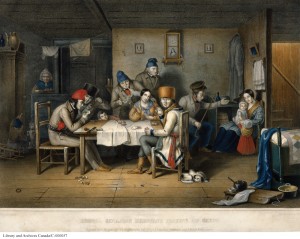
Painting showing a typical house on a seigneury Source – http://etext1.navajo.pearsoncanada.ca/ebook/launcheText.do?values=launchedfrombookshelf::Y::bookID::29233::languageid::1::sessionID::1051717751126222500202016::scenario::1::launchState::goToEBook::invokeType::lms::scenarioid::scenario1::smsUserID::75037014::fromloginpage::Y::platform::::uid::20151027120429::ubd::20151027120429::ubsd::20151027120429::hsid::c9240123923846a1342b578271684ea0 (Page 34)
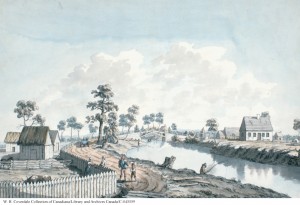
Painting by James Peachy of life on the Seigneury
Source – http://etext1.navajo.pearsoncanada.ca/ebook/launcheText.do?values=launchedfrombookshelf::Y::bookID::29233::languageid::1::sessionID::1051717751126222500202016::scenario::1::launchState::goToEBook::invokeType::lms::scenarioid::scenario1::smsUserID::75037014::fromloginpage::Y::platform::::uid::20151027120429::ubd::20151027120429::ubsd::20151027120429::hsid::c9240123923846a1342b578271684ea0 (Page 34)

A typical seigneury (farm) near Québec, watercolour by Thomas Davies, circa 1787 Source – https://www.collectionscanada.gc.ca/settlement/kids/021013-2051.6-e.html
French vs. English – Fur Trade and Fishing
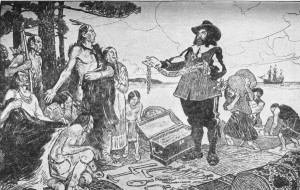
Natives Trading With The French Early 17 Century Source – http://www.uppercanadahistory.ca/finna/finna2.html
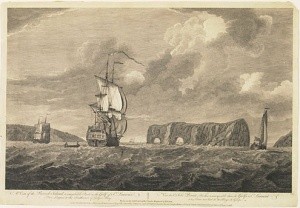
A view of Percé Rock, a spectacular rock formation in the Gulf of St. Lawrence, located two leagues from Gaspé Bay Source – http://www.ameriquefrancaise.org/en/article-379/Parc_national_de_l%E2%80%99%C3%AEle_Bonaventure_et_du_Rocher_Perc%C3%A9.html
7 Years War
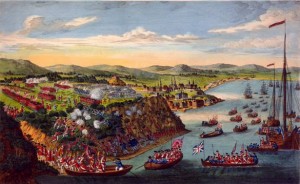
Drawing by a soldier of Wolfe’s army of the Battle of the Plains of Abraham Source -https://en.wikipedia.org/wiki/Battle_of_the_Plains_of_Abraham
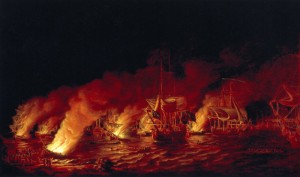
French fire ships sent downriver to block the British advance Source – https://en.wikipedia.org/wiki/Battle_of_the_Plains_of_Abraham
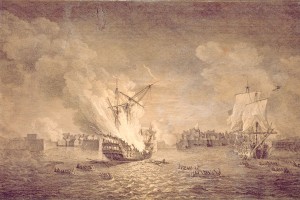
Siege of Louisbourg (1758): British burning warship Prudent and capturing Bienfaisant. Source – https://en.wikipedia.org/wiki/Siege_of_Louisbourg_(1758)
